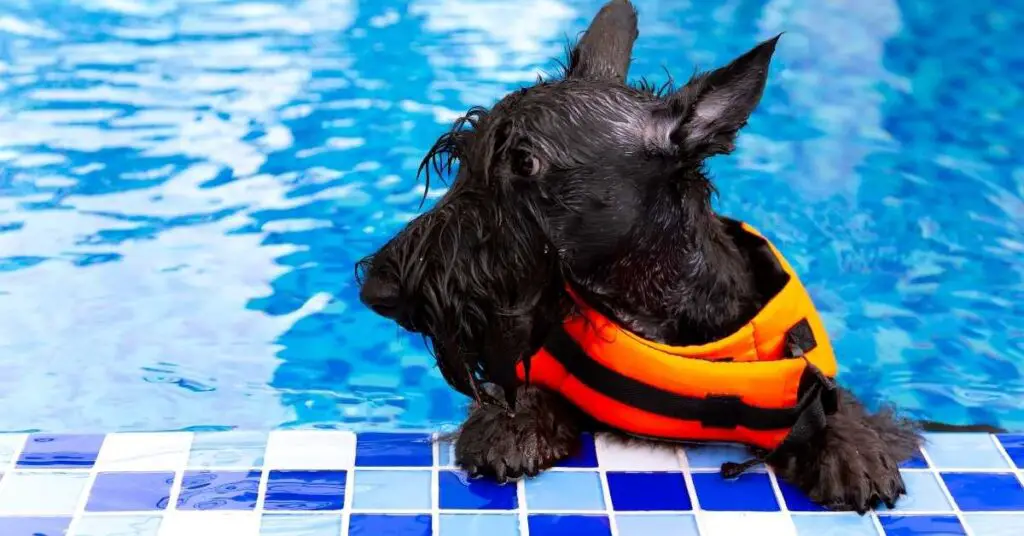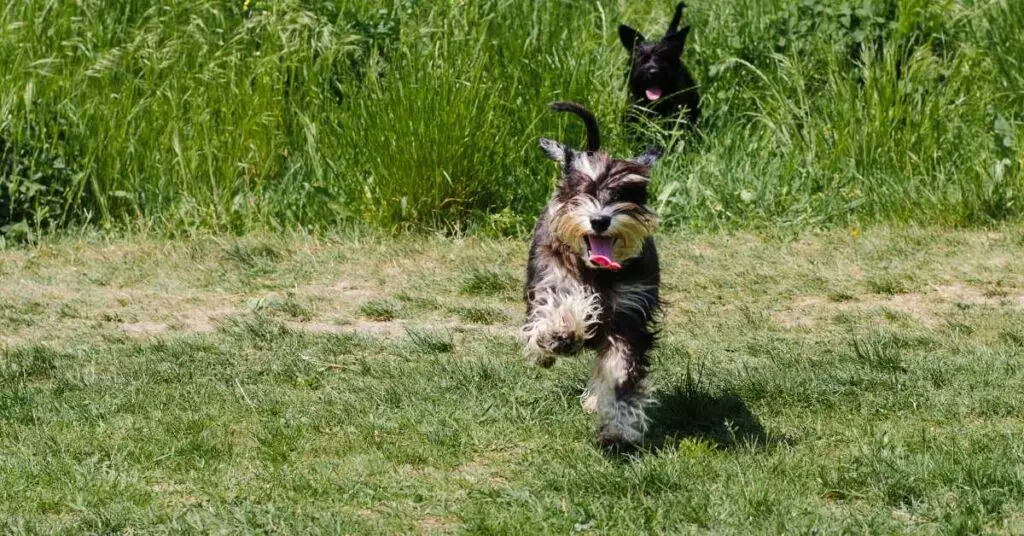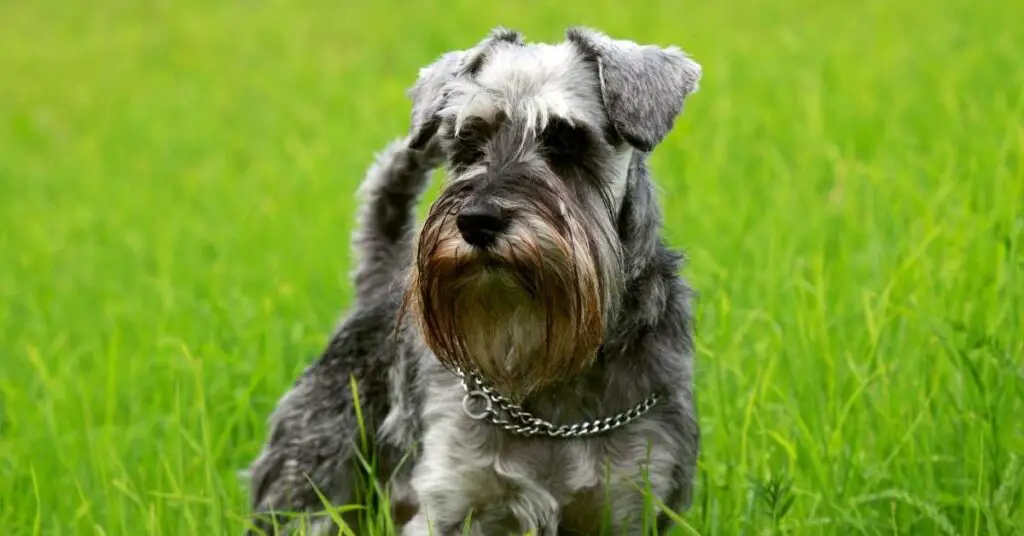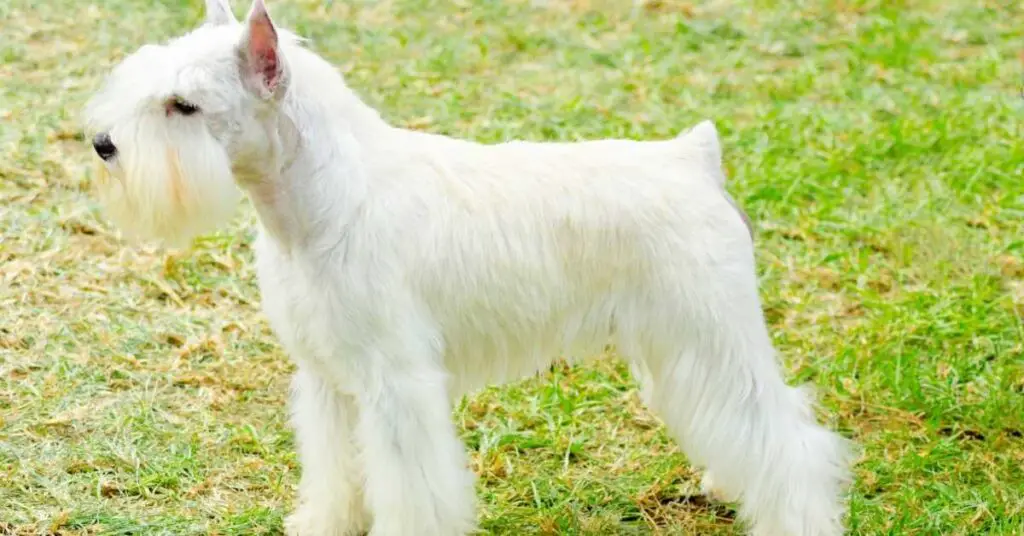As you lay the groundwork for welcoming a schnauzer puppy into your home, remember that Rome wasn’t built in a day. There are essential steps to take to ensure your new furry companion’s comfort and safety.
From securing loose wires to providing a cozy den, each detail plays a crucial role in setting the stage for a smooth transition.
Key Takeaways
- Puppy-proof your home by removing hazards and securing dangerous items.
- Set up a comfortable sleeping area with a safe, hygienic crate.
- Gather essential supplies like training treats and toys tailored to your Schnauzer.
- Establish a feeding routine with small, consistent meals of high-quality puppy food.
Puppy-Proofing Your Living Space
To ensure the safety of your new Schnauzer puppy, thoroughly puppy-proof your living space by removing potential hazards and securing any dangerous items. When it comes to playtime supervision, it’s crucial to create a safe environment where your puppy can explore without encountering hidden dangers.
Start by getting down to your puppy’s eye level to spot any small items that could be choking hazards. Keep electrical cords out of reach or cover them with protective casings to prevent chewing. Secure cabinets with cleaning products or medications with childproof locks to avoid accidental poisoning. Be mindful of houseplants, some of which may be toxic to dogs if ingested.
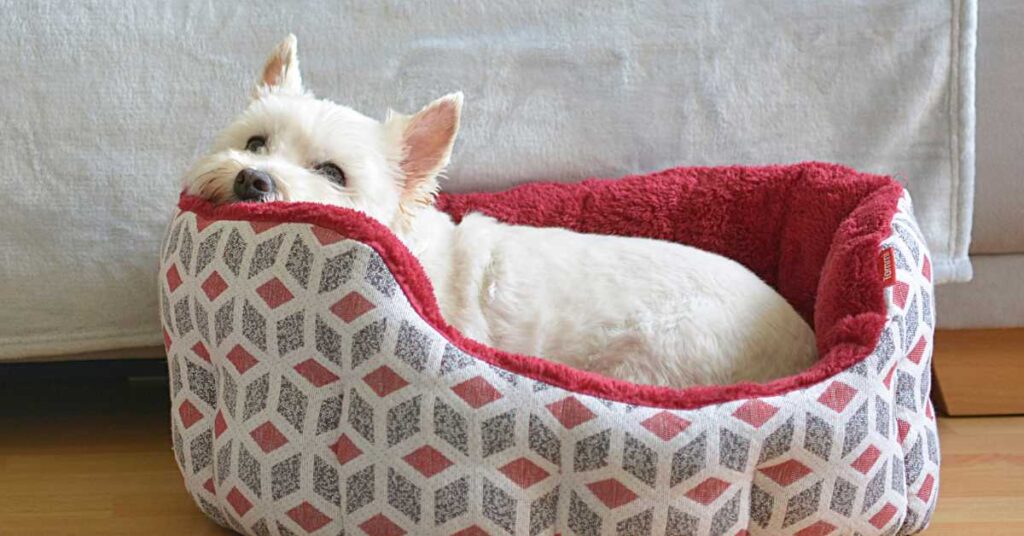
Make sure trash cans are inaccessible to prevent your puppy from rummaging through potentially harmful items. By taking these precautions and staying vigilant during playtime, you can create a space where your Schnauzer puppy can thrive and stay safe.
Setting up a Cozy Sleeping Area
For a cozy sleeping area for your Schnauzer puppy, consider creating a designated space that’s comfortable and safe. Crate training can be a beneficial way to provide your puppy with a secure and cozy sleeping spot. Choose a crate that’s large enough for your puppy to stand up, turn around, and lie down comfortably. Place soft bedding inside the crate for added comfort, such as a washable bed or blankets.
When selecting bedding options, opt for materials that are easy to clean and maintain. This will help keep your puppy’s sleeping area fresh and hygienic. Avoid using bedding that your puppy can chew on and potentially swallow. Additionally, consider using a crate divider to adjust the space as your puppy grows.
Creating a cozy sleeping area for your Schnauzer puppy is essential for their well-being and comfort. By incorporating crate training and selecting suitable bedding options, you can ensure that your puppy has a safe and inviting space to rest and relax.
Gathering Essential Puppy Supplies
Consider gathering essential puppy supplies to ensure you’re well-prepared for welcoming your new Schnauzer into your home. Training treats are vital for teaching your puppy good behavior and reinforcing positive actions. Look for treats that are small, tasty, and easy to chew, making them perfect for training sessions.
Additionally, having a variety of puppy toys is crucial to keep your Schnauzer entertained and mentally stimulated. Toys like chew toys, interactive toys, and plush toys can help prevent boredom and provide a fun outlet for your puppy’s energy.
When selecting training treats, opt for small, soft treats that are easy for your puppy to eat quickly during training sessions. For puppy toys, consider a mix of toys with different textures and purposes to keep your Schnauzer engaged and entertained.
Establishing a Feeding Routine
Ensure your Schnauzer puppy’s health and well-being by establishing a consistent feeding routine that meets their dietary needs and supports their growth. When setting up your puppy’s feeding area, consider the placement of their water bowl. Position the water bowl in a quiet, easily accessible spot away from their feeding area to encourage proper hydration throughout the day.
Creating a feeding schedule is crucial for your Schnauzer puppy. Puppies typically require three to four small meals a day to maintain energy levels and support their development. Establish set meal times, making sure to feed them at the same times each day. Consistency is key in helping your puppy adjust and thrive in their new routine.
Remember to choose high-quality puppy food that’s appropriate for their age and size. Consult your veterinarian for guidance on portion sizes and feeding frequency based on your puppy’s individual needs. By setting up a feeding routine that includes proper water bowl placement and a consistent feeding schedule, you’re laying the foundation for a healthy and happy life for your Schnauzer puppy.
Creating a Safe Outdoor Area
When setting up an outdoor area for your Schnauzer puppy, prioritize safety by removing any potential hazards and creating a secure space for them to explore. Outdoor playtime is crucial for your puppy’s physical and mental well-being. Here are some essential steps to ensure a safe outdoor environment for your new furry friend:
- Secure Boundaries: Install a fence or use pet playpens to create a safe and enclosed space for your Schnauzer to play without the risk of wandering off.
- Remove Toxic Plants: Check your outdoor area for any toxic plants that could harm your puppy if ingested. Replace them with pet-friendly greenery.
- Provide Shelter: Create a shaded area where your Schnauzer can rest and cool off during hot days. This will protect them from heatstroke.
- Outdoor Potty Area: Designate a specific spot in your outdoor area for potty training. Consistency is key in reinforcing good habits.
Enrolling in Puppy Training Classes
To further develop your Schnauzer puppy’s behavior and socialization skills, enrolling in puppy training classes is a valuable step towards fostering a well-rounded companion. These classes offer a structured environment where your puppy can learn socializing techniques and behavioral training under the guidance of experienced trainers.
Through interactive sessions, your puppy will have the opportunity to interact with other dogs, helping them become more comfortable and confident in various social settings.
In puppy training classes, your Schnauzer will also learn essential obedience commands through positive reinforcement. This method focuses on rewarding desirable behaviors, encouraging your puppy to repeat them. Positive reinforcement not only strengthens the bond between you and your puppy but also makes the learning process more enjoyable and effective.
Frequently Asked Questions
What Is the Best Way to Introduce a Schnauzer Puppy to Other Pets in the Household?
Introducing a schnauzer puppy to other pets involves gradual socialization and positive reinforcement training. Start by allowing supervised interactions, rewarding calm behavior. Consistency in household integration and reinforcing good behavior will help create a harmonious environment for all pets.
How Can I Help My Schnauzer Puppy Adjust to Being Home Alone During the Day?
To help your schnauzer puppy adjust to being home alone during the day, consider crate training to ease separation anxiety. Provide interactive toys for mental stimulation. Establish a routine for comfort and security.
What Are Some Common Health Concerns for Schnauzer Puppies and How Can I Prevent Them?
To keep your Schnauzer puppy healthy, prioritize regular vet check-ups, balanced nutrition, and exercise. Prevent common health issues by staying up-to-date on vaccinations and grooming, maintaining a safe environment, and providing mental stimulation through training and play.
How Often Should I Groom My Schnauzer Puppy and What Tools Do I Need?
To keep your Schnauzer pup looking sharp, groom them every 4-6 weeks. Start with a slicker brush to detangle, then use a comb for a smooth finish. Essential tools include clippers, shears, and dog shampoo for proper coat care.
What Are Some Effective Methods for Potty Training a Schnauzer Puppy?
When potty training a Schnauzer puppy, use crate training and positive reinforcement for best results. Differentiate between indoor and outdoor training areas to establish routines. Consistency, patience, and praise are key in encouraging desired behavior.
Conclusion
Now that you have puppy-proofed your home, set up a cozy sleeping area, gathered essential supplies, established a feeding routine, created a safe outdoor area, and enrolled in puppy training classes, you’re well on your way to welcoming your schnauzer puppy into your home.
By following these steps, you’re ensuring a smooth transition for both you and your new furry family member. Enjoy the journey of raising and bonding with your schnauzer puppy!

